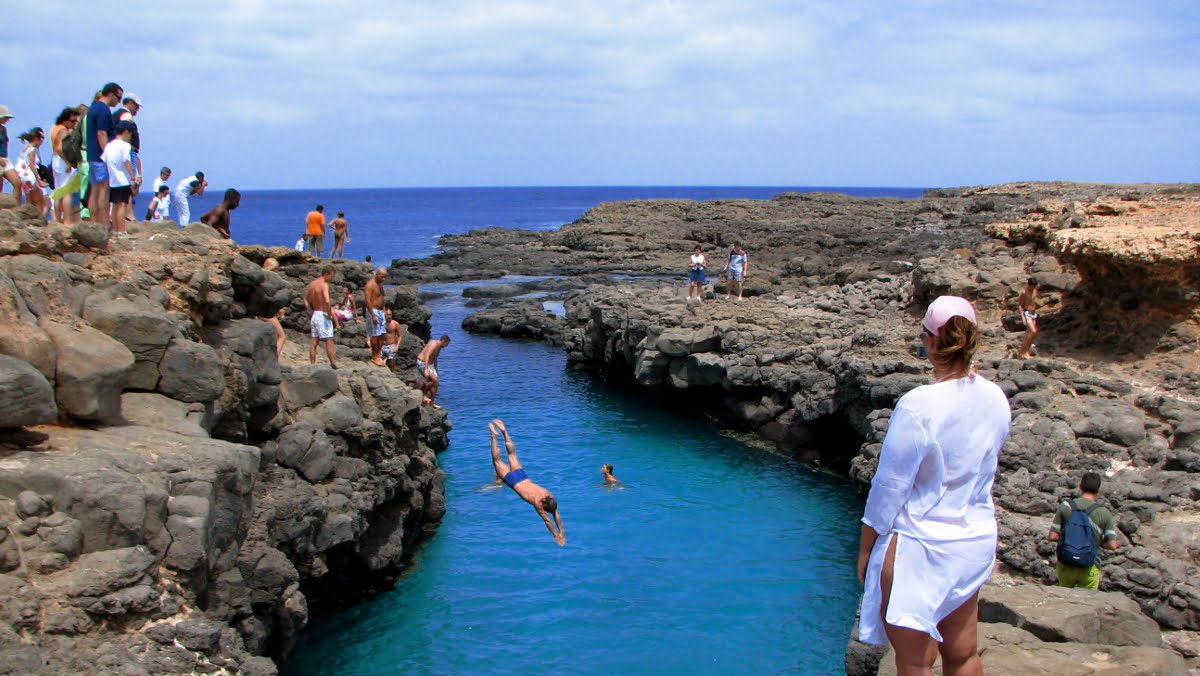Bathing in Cabo Verde

What is the first thing you think of when you hear the word “island”? Most people would say “beach”. And Cape Verde has some of the most amazing beaches in the African continent!
White sandy beaches make most of the northern group of islands, whereas in the southern group you can find many black sandy beaches. Apart from the big mountains in this group of islands, the black sand is yet another sign of the volcanic origin of this archipelago.
Although it is in the middle of the Atlantic ocean, the temperature of the water surrounding the islands is constantly pleasant, ranging from 24º to 27º. The visibility is usually extremely good, except on the month with stronger currents. Between December and April wind is usually stronger, which can be slightly irritating for sunbathers looking for a relaxed day at the beach. During this time, waves are usually stronger as well, so inexperienced swimmers should take more precautions and be aware of the different currents.
Although Cape Verde has a “beach climate” all year round, there are usually no life guards at the beach between September and June. Before you enter the water make sure you know where you are and that you have a plan in case anything goes wrong in the water. Inform your friends or hotel, if you’re travelling alone, of where you will be and how long you plan to stay there as an added security measure. Generally it is a good idea to check where the locals take baths and use those same spots, or at least inform yourself – with locals or at your hotel – about which places you can take a bath in and which you should avoid, as the currents can be very dangerous. Even at the spots that were advised to you, it is good practice to sit for a few minutes and watch the waves, so you can get a feeling of how strong the surf is and where you should enter and exit.
As in any other country, it is important that you keep in mind the cultural aspects and what you can and cannot do. Walking around town, even if it’s a beach town, wearing nothing but your bikini or swim-shorts is very unusual, so don’t be surprised if you feel observed when doing so. Also, nude bathing and topless are not culturally appropriate, so unless you are in a totally deserted area, or in an all-inclusive resort mainly used by European tourists, you should refrain from doing that.
Most of the islands have good places to bathe, but here is a list of some:
- Praia de Santa Maria, in Sal
- Laginha, in São Vicente
- Baía das Gatas, in São Vicente
- Calhau, in São Vicente
- Praia de Curraletes, in Santo Antão
- Praia de Tarrafal de Monte Trigo, in Santo Antão
- Praia Francês, in São Nicolau
- Praia Batxu Rotxa, in São Nicolau
- Praia de Estoril, in Boavista
- Praia da Boca de Salina, in Boavista
- Praia de Chaves, in Boavista
- Praia da Varandinha, in Boavista
- Praia de Santa Monica, in Boavista
- Praia do Curral Velho, in Boavista
- Praia de João Barrosa, in Boavista (!)
- Praia do Derrubado, in Boavista
- Praia da Vila, in Maio
- Praia da Calhetinha, in Maio
- Ribeira D. João, in Maio
- Praia Real, in Maio (!)
- Praia de Galeão, in Maio (!)
- Praia de Ponta Preta, in Maio (!)
- Quebra Canela, in Santiago
- Praia Baixo, in Santiago
- São Francisco, in Santiago
- Ribeira da Prata, in Santiago
- Praia do Tarrafal (Baía Verde), in Santiago
- Praia Mar di Baixu, in Santiago
- Ponta da Salina, in Fogo
- Piscina, in Brava
(!) These are beaches where you should take extras precautions when going in the water, because the currents are very tricky in these spots and you can easily get in trouble if you don’t know the zone well.
